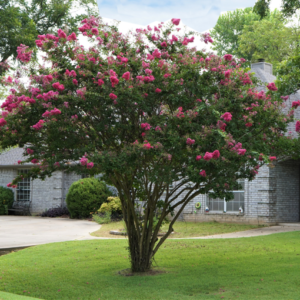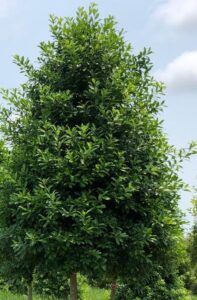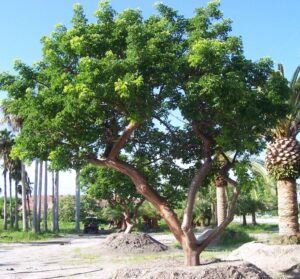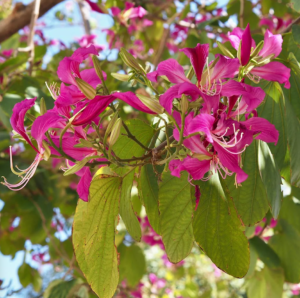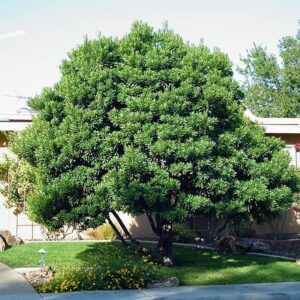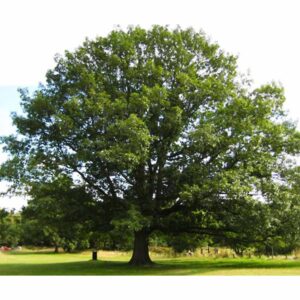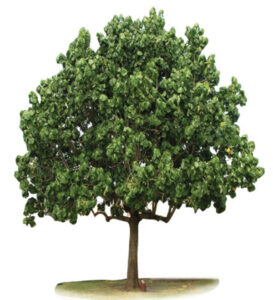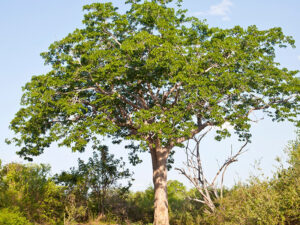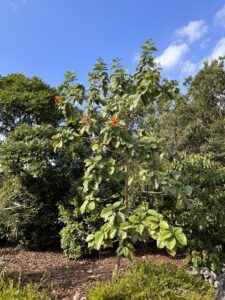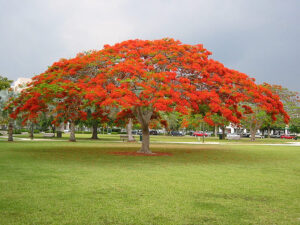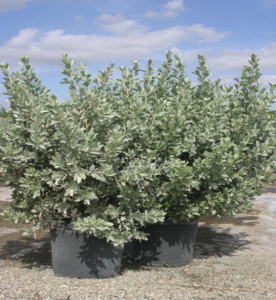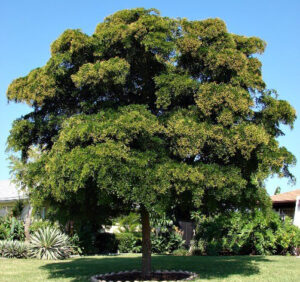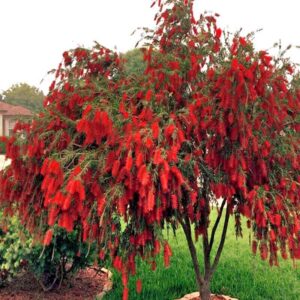PLANT CATALOG
Lagerstroemia indica - Often referred to as the "lilac of the South,” the crapemyrtle is a favorite for landscapes. It can be grown as either a shrub or small tree and is often used in groupings, containers, hedges, and screens. You can even find the common crapemyrtle used as small street trees in urban settings.
Ilex x attenuata ‘Eagleston’ - The Eagleston Holly is a beautiful evergreen holly that is grown as a large shrub or small tree with a pyramidal growth habit. The tree has a dense canopy with small slender branches which are smooth and light to medium gray in color. During the cooler months, it produces an abundance of bright red, fleshy, round berries.
Acer saccharum subsp. floridanum - As you would guess by its common name, Florida maple grows well in Florida. This maple provides beautiful fall colors in muted yellows and oranges, and older trees have attractive ribbed gray bark.
While the Florida maple is considered by some taxonomists as a subspecies of the sugar maple (Acer saccharum), which grows further north, others see it as a separate species.
Bursera simaruba - Native to South Florida and the tropical offshore islands, gumbo-limbo is a large semi-evergreen tree.
It can reach sixty feet in height, but it’s usually seen smaller in landscape plantings. The soft, lightweight, and easily carved wood of gumbo-limbo was used for making carousel horses before the advent of molded plastics.
The trunk and branches are thick and are covered with resinous, smooth, peeling coppery-colored bark with an attractive, shiny, freshly varnished appearance. The gumbo-limbo is often referred to as the “tourist tree” because the tree’s bark is red and peeling, like the skin of a sunburnt tourist.
Gumbo-limbo is also considered one of the most wind-tolerant trees.
Bauhinia blakeana - Considered the most beautiful tree available, with exceptionally long-blooming, flamboyant, deep rose-red, orchid-shaped flowers that have a touch of white. The sterile flowers produce no seedpods. Develops as a tree with a rounded crown in warmer winter regions, more shrub-like in cooler winter regions. Provides stunning winter interest.
Elaeocarpus decipiens -Japanese blueberry tree is a broad-leaved evergreen large shrub or tree in the Elaeocarpaceae family native to temperate East Asia. This tree can grow to 20 to 35 feet in height with an equal spread, but become larger with time (mature trees in nature are known to be 60 feet). The genus Elaeocarpus is derived from the Greek words 'elaia' meaning olive and 'karpos' meaning "fruit" knodding to the olive-shaped blue fruits. The specific epithet decipiens is from the Greek 'decipio' meaning "to take" or "catch" though the meaning behind this name is not clear.
Plant in full sun or partial shade in well-drained soil and water regularly until well established. It does best with fairly regular irrigation. It is cold hardy into USDA Zone 8 where winters do not go below 10 or 15 degrees F, such as the Pacific Northwest and Southern California. The leaves emerge with an attractive bronze coloring later turning dark shiny green. Attractive fragrant foliage lures nectaring pollinators like bees and butterflies.
Quercus laurifolia - A large, fast-growing, shade tree, laurel oak is native to the southeastern United States and noted for its dense, oval canopy. Quercus laurifolia has been described as tolerant of wet sites. Laurel oaks are taller than they are broad, eventually reaching 60 feet or more in height with a 35- to 45-foot spread. The trunk can be up to four feet in diameter and flares out at the base lifting sidewalks and curbing if planted in tree lawns less than eight feet wide. Trees are either deciduous in the north or semi-evergreen in the south. The smooth, narrow leaves are shiny on both sides and the round acorns are set 1/4 or less of their height into thin, saucer-like cups.
Quercus virginiana - Southern live oaks are majestic trees that are emblems of the South. When given enough room to grow, their sweeping limbs plunge toward the ground before shooting upward, creating an impressive array of branches. Crowns of the largest southern live oaks reach diameters of 150 feet (45.7 meters)—nearly large enough to encompass half of a football field. On average, though, the crown spread is 80 feet (24 meters) and the height is 50 feet (15 meters). Branches usually stem from a single trunk, which can grow to five or six feet (1.5 to 1.8 meters) in diameter.
Hibiscus Elatus - The Mahoe is the national tree of Jamaica. It is indigenous to the island and grows quite rapidly, often attaining 20m (66ft) or more in height. In wetter districts, it will grow in a wide range of elevations, up to 1200m (4000 ft.), and is often used in reforestation.
The tree is quite attractive with its straight trunk, broad green leaves, and hibiscus-like flowers. The attractive flower changes color as it matures, going from bright yellow to orange-red and finally to crimson.
Cordia sebestena - This dense, rounded, evergreen native tree grows slowly to a height of 30 feet with a spread of 25 feet and can develop a trunk 12 inches thick. The large, 4 to 9-inch-long, stiff, dark green leaves are rough and hairy, feeling much like sandpaper.
Dark orange, 2-inch-wide flowers appear in clusters at branch tips all year round, but especially in spring and summer. The splendid flowers are followed by one to two-inch-long, egg-shaped fruits, which have a pleasant fragrance but are not particularly tasty.
Orange Geiger is drought, wind, and salt tolerant. It has large dark green leaves and showy orange flowers almost all year, which attract butterflies and hummingbirds.
Delonix regia - The Royal Poinciana Tree is also called the ‘Flame Tree’ for its blazing color.
While many others offer pink or white flowers at the start of the season, the Poinciana’s flame-colored hues stand out. Poinciana Trees are often the brightest trees in the neighborhood, attracting the attention of guests and neighbors alike.
Combretaceae - It is a medium tree or large shrub with an open crown to dense crown with pruning. Its leaves are alternate, 2-4 inches long, leathery, and covered with silvery hairs. Flowers are green 'button-like' clusters on the branch tips and the cone-like fruit are made of many small dry seeds.
It requires full sun and is used as an accent, hedge, screening plant, or specimen tree in residential and commercial landscapes along the coast. Buttonwoods are the 'fourth' Mangrove and as such, are highly wind and salt tolerant, including inundation tolerance for front line water front landscapes.
Bucida buceras - The exquisite Shady Lady black olive tree, with its lush layers of tiny leaves on zigzagged stems, is one of the most beautiful South Florida trees.
Each of these trees is unique and grows differently. After its Oriental garden youth, a young tree may develop a somewhat funky appearance. The foliage often grows into an irregular oval shape, with tops or shoots going out in odd directions.
Callistemon viminalis - The Weeping bottlebrush grows into a medium-sized tree 20-30 ft. tall with an upright form and weeping branches. Young plants grow for many years into narrow columnar plants, 10-15 ft. wide, but become increasingly broad, eventually reaching 20-25 ft. in width. Foliage is comprised of soft narrow pale green leaves that hang from drooping branches to create a weeping appearance. Red flowers occur in early to mid-spring as well as occur intermittently throughout warm months of the year.


